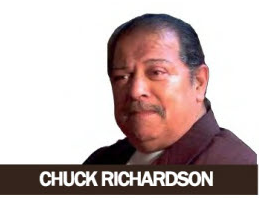As we ferret out truth from reality in the ongoing accusations against Virginia Governor Ralph Northam, where do we draw the line of guilt by elected officials on apparent acts of past racism? I could not help but feel sympathetic for Gov. Northam as he faced the inseparable barrage of attacks from friend and foe regarding the allegations of racial antics and disparaging deeds born of ignorance and a heritage of racial prejudice, oppression, and bigotry.
What criteria do we use to determine whether the hideous blackface and Ku Klux Klan-hooded images on his medical school year book page from 35 years ago are symptomatic of who he is now or whether he has changed? And how do we measure the validity of such change or whether it deserves our continued support or be rejected?
Consider that nearly every White person over the age of 50 might be able to recall some instance of racism in which they may have indulged at the age of 25 or younger.
Should we even consider the possibilities of change or automatically assume guilt as obviously has been the case in this instance?
I carry no brief for Gov. Ralph Northam’s innocence. But I pose these questions merely to reflect upon the processes of our judgment. So, the question in my mind is rather about we than about he. Are we being logical, reasonable and fair in the processes of our judgement?
Gov. Ralph Northam has demonstrated himself to be a fair and decent person with no known racist proclivities since we’ve known and elected him. But for this recent revelation, who would have thought it? Yet, in the controversy that is now national, his Virginia colleagues are calling for his resignation as if all of their hands are clean.
For example, when I observed my friend and former Richmond City Council desk mate, now U. S. Sen. Tim Kaine, call upon Gov. Northam to resign, I was reminded of what I consider to be a moment of racial indiscretion in Kaine’s career that struck me as deeply ironic. In 1999, when the city of Richmond was considering the placement of a permanent mural of Confederate General Robert E. Lee on the Richmond Flood Wall, a controversy erupted. This mural of a man who led the civil war on the side that would have maintained slavery and racial oppression was strongly opposed by the Black community.
As his former colleague on City Council, I made a personal appeal to then Mayor Tim Kaine. I explained to Tim that White people seldom listen to Black people on such issues, but they would listen to him.
And thus, he had an opportunity to teach how deeply offensive the symbols of Confederate generals struck into the souls of Black people in Richmond, the former Confederate capital and even across the South. Over the phone, I explained to him – in great details – the racist implications that Lee had that White people did not understand and that he might.
Alas, Kaine ignored my plea and voted to support the racist symbol of Robert E. Lee on the Richmond floodwall as mayor of the City of Richmond – unforgivable for a man of good conscience. So, does Sen. Tim Kaine continue to support the symbol of Robert E. Lee? Or has he changed? Do we hold Tim Kaine responsible for his past deed that had racist implications, or do we assume – based on his record – that he has more enlightened views that will now do good to benefit African-Americans? And how do we distinguish or draw a parallel between the circumstances of Sen. Tim Kaine and that of Gov. Northam? And how do we define fairness even if there is a gulf between the two situations?
It is easy to jump on the bandwagon of critics, but much more difficult to be measured, patient, giving benefit of doubt as we judge. All of us make mistakes at the age of 25 and some of us change. How many of us know for certain who has changed and who has not?
At any rate, it is human to err, but divine to forgive. I choose forgiveness and judge a man for what I know and see of him today – not what I’m told or even observe – of the doubtful past. So, let those who are “without sin” cast the first stone at Gov.
Northam. And as for those – including Sen. Tim Kaine – who have already thrown their rocks, it is not too late to retrieve them.
Chuck Richardson served on the Richmond City Council for 18 years. Among other race-related actions, he was the leading advocate for the placement of the Arthur Ashe statue on Richmond’s Monument Avenue and he was the author of Richmond’s 30 Percent Minority Set Aside program struck down by the U. S. Supreme Court in 1989.
Chuckster@gmail.com.













No Comment